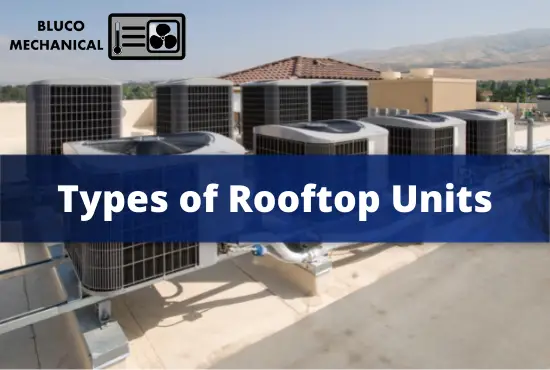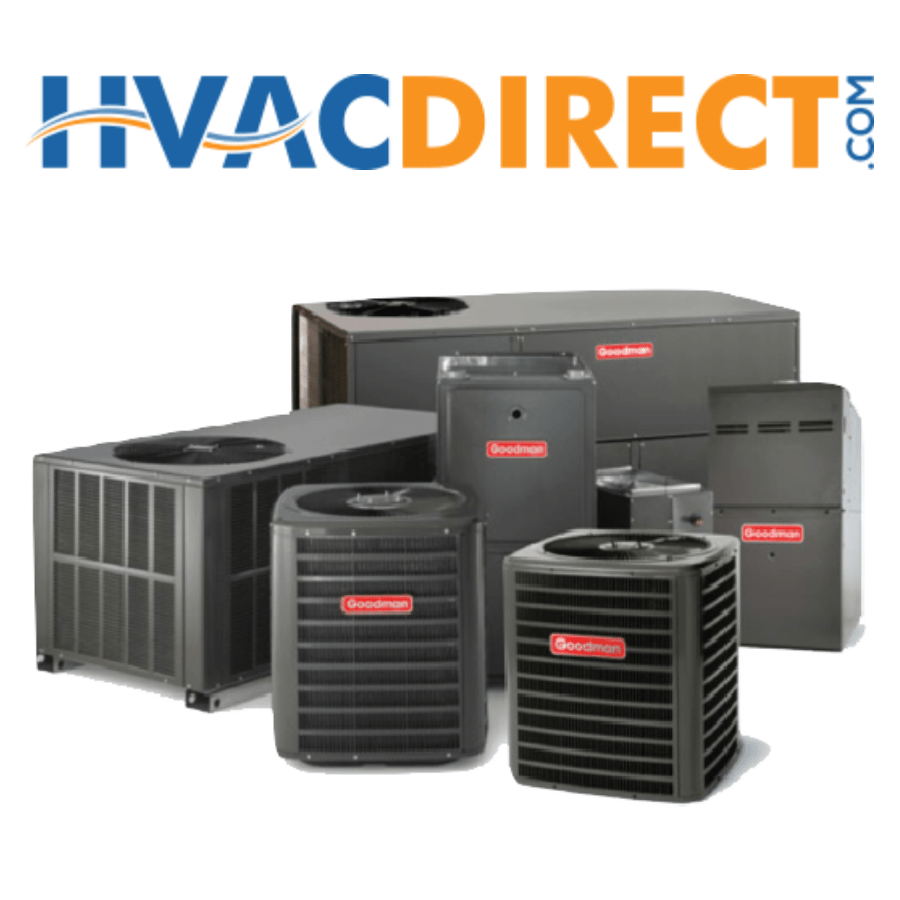Types of Rooftop Units
The operation of rooftop units, or RTUs as the name implies, rooftop units, or RTUs, are installed on the roofs of retail establishments and small commercial buildings to provide air conditioning to specific areas.
These are package air conditioning units, famous for their simplicity, compact size, self-contained nature, and all-in-one design.
Purpose Of a Rooftop Unit
A rooftop unit’s goal is to distribute conditioned air throughout defined portions of a building. Rooftop units can connect to ductwork, which represents the path taken by conditioned air.
Rooftop units are a subset of air handlers; the primary distinction is that they are often more compact and always positioned on the roof, which requires them to be more robust and weather-resistant to withstand exposure to the sun, rain, snow, and wind.
AHUs & RTUs
Additionally, AHUs are frequently connected to central plant components such as chillers and boilers to provide heating and cooling, whereas RTUs are self-contained and include everything they require. That is why they are referred to as package air conditioners, and we will examine several model units shortly to demonstrate why.
There are numerous rooftop units, and we’ll examine four of the most common, beginning with the most basic. It absorbs and conditions 100 per cent pure air. To balance the air pressure, return an exterior exhaust fan often expels air.
RTU Housing
First, we have the housing, which must protect all of the mechanical and electrical components within the unit from the sun, wind, rain, snow, and frost, among other elements. Various access panels will be integrated into this to allow engineers to access and maintain the internal components.
Rooftop Unit Air Hood
Typically, one end will have an air hood. This form of the cowl prevents water, snow, and debris from entering the unit. Naturally, there will be a mesh across the air hood’s inlet to avoid wildlife and things from entering, which can cause blockages and damage the fan.
Rooftop Unit Dampers
The next item we may discover is some dampers. Not all units have them. However, the majority of newer models do. These are essentially rotating sheets of metal. Some units include a variable open position between totally open and fully closed; this is used to control the air entering the team from the outside, mainly if recirculation is employed, which we’ll discuss later in the video after this basic model.
Rooftop Unit Filters
Following the dampers are the filters. These are typically removed from the unit via the service door. Their goal is to purify the air by catching the dirt and dust included in the incoming fresh air from the outside. Without filters, the fan, heat exchangers, mechanical components, and ductwork will gradually become covered in dust, reducing the machine’s efficacy and efficiency. If enough dust accumulates, it will eventually cause equipment failure.
Rooftop Unit Heating and Cooling Coils
Following the filters, we’ll move on to the coils on the rooftop AC unit. These coils will add or remove thermal energy from the air to cool or heat it. Depending on the location of the RTU and the ambient conditions, some units will be cooling solely, while others will be heating and cooling.
If the unit is exclusively used for heating, it’ll connect to either a heat pump, a gas burner, or an electrical heating element.
Suppose the device is capable of both heating and cooling. In that case, it will likely have two heat exchangers, one of which will be a coil connected to a refrigeration unit for cooling. Alternatively, a device could supply heating and cooling by connecting a single ring to a heat pump. We already discussed heat pumps in a video; click here to view it.
A refrigeration system will cool the majority of units. Compressor, condenser, fan, and controls are often situated at the rear or side of the team to reject heat and keep it away from the intake and conditioned air within.
Rooftop Unit Fan
Following the coils, we’ll locate the fan. It is often a belt-driven centrifugal fan, but it can also be an energy-efficient EC fan. The fan draws air in from the outside, passes it through dampers, filters, and coils, and then pushes it into the ductwork for distribution throughout the structure. It is the most basic form of Rooftop unit we provide. What more might we discover? What are the types of rooftop units?
Rooftop Unit Recirculation
Specific units may utilise a return ductwork system to recirculate the internal air. It is used to conserve energy, particularly during the winter months when the outside air is freezing and the return air is hot. We can lessen the heating burden by mixing some warm return air with the cold fresh intake air.
A return air damper is included in this design. It will act in conjunction with the intake damper, and the two will adjust positions in response to the amount of new air and return air travelling through the unit. As the damper opens, the fan’s suction draws air in from the ducting. When the damper is closed, no air is sucked into the room. There will always be some fresh air entering this type of building because without it; the building will fill up with carbon dioxide and produce an unhealthy environment.
Rooftop Unit Recirculation and Discharge
Another variation we’ll encounter, and this is a pretty standard form. The temperature difference between the outside and return air and the CO2 content of the return air determines. How much air should reject and how much, mixed and recirculated? When the outside air temperature can be below or near the favourable indoor temperature, this unit can blow 100 per cent fresh air into the building. None of it’ll recirculate; instead, it will reject to meet the cooling demand.
RTU With Heat Wheel
The third variant we’ll examine incorporates a heat wheel. It is gaining popularity as the demand for energy efficiency in buildings increases to reduce CO2 emissions and cut energy and utility expenses.
The heat wheel is a rotating heat exchanger that absorbs heat or coolth from the return discharge air. However, it transfers it to the entering fresh air without mixing the two air streams. This mechanism draws air in through the hood; the damper controls the amount of air that enters. The atmosphere is then filtered to remove dust and grime and protect the heat wheel’s surface before passing through the heat wheel. Because these heat wheels are not entirely airtight, some air mixing will occur.
The heat wheel will offset heating and occasionally cooling demand when conditions are favourable, saving energy and utility expenses. Following the heat wheel, the air will filter again. We have a damper on the return air stream just before the filter. Not all heat wheel rtu include this feature; some employ only 100% new air intake and extraction. If the unit does not have the option to recirculate, this second filter bank will unlikely to include.
Following that, the air will pass through heat exchangers, either heating or cooling it to the correct temperature.
The fan will then transport the air to the preset spots across the building via the ductwork.
Through the return ductwork, the return air subsequently drew back into the RTU. Once it re-enters the RTU, it can either recirculate some air into the fresh air intake or travel through a filter and then through the heat wheel to absorb waste heat.
The air then flows through an extract damper, which use to control both the volume of return air mixing and the internal pressure of the building. It next passes through a grille, preventing debris and wildlife from entering the unit and may discharge into the atmosphere.



No Comments
Be the first to start a conversation